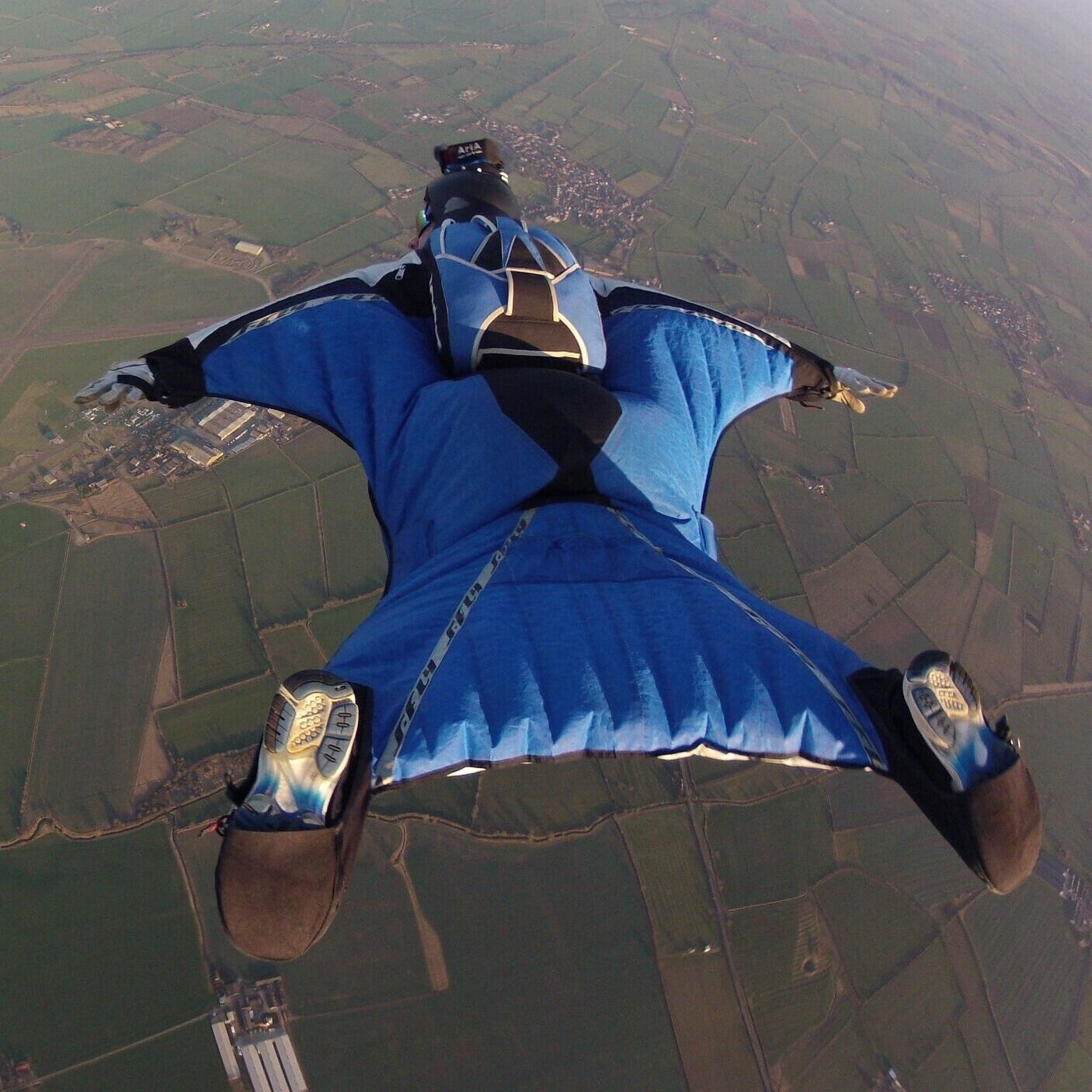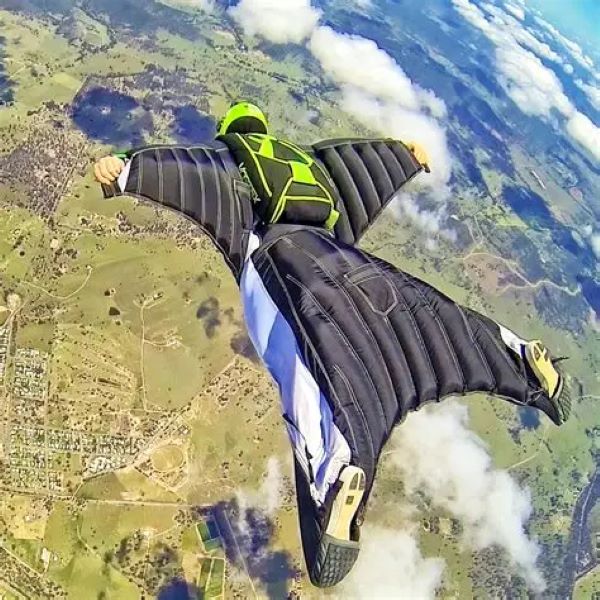The wingsuit death rate is a critical topic for anyone interested in extreme sports. Wingsuit flying, also known as proximity flying, involves jumping from high points and gliding through the air using a specialized suit. This sport delivers unmatched speed and freedom. However, it carries one of the highest risk levels among adventure activities. As a result, the wingsuit death rate remains a major concern for athletes, instructors, and regulators. In recent years, data has shown that fatalities occur more frequently than in skydiving or base jumping alone. Consequently, understanding the causes behind these deaths is essential. Moreover, advancements in training and equipment aim to reduce the wingsuit death rate over time. Ultimately, this article explores the real dangers, statistical trends, and safety measures tied to this thrilling but deadly pursuit.
 What Is Wingsuit Flying and How It Differs from Other Sky Sports
What Is Wingsuit Flying and How It Differs from Other Sky Sports
Wingsuit flying allows humans to glide through the air like flying squirrels. The suit has fabric between the arms and legs. This creates surface area and generates lift. Flyers jump from cliffs, planes, or bridges at high altitudes. They then navigate close to rock faces, trees, or mountains. This form of flight is called proximity flying.
Skydiving typically involves freefall followed by parachute deployment. Base jumping uses fixed objects like towers or cliffs. Wingsuit flying combines elements of both. Yet, it adds horizontal movement and precision control. Pilots must avoid obstacles at speeds up to 160 mph. Therefore, even small errors can lead to fatal outcomes. Because of these demands, the wingsuit death rate exceeds many other aerial sports.
Origins and Evolution of the Wingsuit
The idea of human flight dates back centuries. Leonardo da Vinci sketched early concepts. Modern wingsuits began in the 1990s with Patrick de Gayardon’s designs. He adapted parachute materials into wing-like structures. These allowed greater glide ratios and control.
In the 2000s, companies like S-Fly and TonySuit refined the technology. New fabrics improved aerodynamics and durability. Wingsuits became lighter and more responsive. Today’s models offer better maneuverability. Still, they require expert skill to operate safely. Despite progress, the wingsuit death rate remains high due to inherent risks.
Key Differences Between Wingsuit Flying and Base Jumping
Base jumping involves leaping from fixed objects. These include buildings, antennas, spans (bridges), and earth (cliffs). Jumpers deploy parachutes quickly after exit. Their flight time is short and mostly vertical.
Wingsuit flying extends that time dramatically. The suit enables forward motion and extended glide paths. Flyers cover miles before deploying chutes. They often fly near terrain at dangerous speeds. This requires intense focus and perfect timing. Mistakes leave no room for recovery. Hence, the added complexity increases the wingsuit death rate significantly.
 Statistical Overview of the Wingsuit Death Rate
Statistical Overview of the Wingsuit Death Rate
Data on wingsuit fatalities comes from organizations like the Red Bull Airborne Project and BASE Fatality List. Since 1981, over 400 base-related deaths have occurred. Around 70% involve wingsuit users. That means roughly 280+ wingsuit flyers have died during flights.
Between 2015 and 2023, the average annual wingsuit death rate was about 15–20 fatalities per year. With an estimated global community of 2,000–3,000 active wingsuit pilots, this represents a fatality rate of 0.7% to 1% annually. Compared to general skydiving (0.006%), this is over 100 times higher.
Most deaths happen during proximity flying. Collisions with terrain are the leading cause. Secondary factors include canopy malfunctions and poor weather decisions. These statistics highlight how extreme the risks truly are.
Annual Trends and Geographic Hotspots
Certain years show spikes in wingsuit deaths. For example, 2016 recorded 23 fatalities. 2021 had 19 confirmed deaths. These peaks often follow viral videos or media attention. Newcomers may attempt jumps without proper training.
Geographically, the Alps in Europe see many incidents. Locations like Lauterbrunnen Valley in Switzerland attract experienced flyers. However, narrow gorges increase collision risks. Norway, the United States (especially Utah and Arizona), and Canada also report frequent accidents. Mountainous regions with popular launch sites become hotspots. Thus, location plays a major role in the wingsuit death rate.
Causes Behind High Fatality Numbers
Several key factors contribute to the high wingsuit death rate. First, pilot error accounts for most crashes. Misjudging distance, speed, or wind conditions leads to impact. Second, lack of experience is common among victims. Many had fewer than 200 total jumps. Some attempted complex routes too soon.
Equipment failure is rare but possible. Suit tears or parachute issues do occur. Environmental factors like sudden gusts or thermals disrupt flight paths. Poor visibility increases danger. Additionally, ego and peer pressure push some to take unnecessary risks. All these elements combine to create lethal situations.
 Training Requirements and Skill Progression
Training Requirements and Skill Progression
No formal certification governs wingsuit flying. However, responsible organizations recommend strict progression. Most experts agree that pilots need at least 200 skydives before trying a wingsuit. This builds body control and emergency response skills.
After that, beginners start with basic suits and low-risk jumps. They practice in open areas away from terrain. Coaches often use video feedback to correct technique. Only after mastering stability should pilots consider proximity flying.
Advanced training includes flight path planning, weather reading, and emergency drills. Mentors play a crucial role. Without guidance, the wingsuit death rate climbs even higher. Therefore, structured learning saves lives.
Stages of Wingsuit Pilot Development
Pilots progress through clear stages. Stage 1 focuses on skydiving fundamentals. Students learn freefall posture, altitude awareness, and parachute handling. Next, they transition to tracking dives. These mimic wingsuit movements without the suit.
Stage 2 introduces beginner wingsuits. These have smaller wings and less glide. Jumps occur from aircraft at high altitudes. Emphasis is on stability and safe parachute deployment.
Stage 3 involves terrain flying. Only highly experienced pilots attempt this. They study maps, practice visualization, and fly with teams. Each stage reduces risk. Skipping steps greatly increases the wingsuit death rate.
Safety Equipment and Technological Advances
Modern gear helps mitigate some risks. Wingsuits now use reinforced nylon and ripstop fabrics. These resist tearing under stress. Helmet-mounted cameras allow post-flight analysis. GPS trackers monitor speed and trajectory.
Altimeters provide real-time height data. Audible alerts warn of low altitude. Automatic activation devices (AADs) deploy parachutes if needed. Reserve parachutes undergo regular inspections. These tools improve survival chances.
Some pilots use wind sensors and route simulators before jumping. Augmented reality systems are in development. Technology cannot eliminate risk. However, it lowers the wingsuit death rate when used correctly.
Role of Parachute Systems in Survival
Parachute performance is vital. After a glide, pilots must deploy their main chute reliably. Malfunctions like line twists or pilot chute hesitation can be deadly. Proper packing and maintenance prevent most issues.
Many use larger canopies for better control. Square ram-air parachutes respond well to inputs. Reserve chutes are mandatory. They activate manually or automatically. A failed deployment often results in death. Hence, parachute reliability directly affects the wingsuit death rate.
Psychological Factors Influencing Risk-Taking
Fear management is central to wingsuit flying. Some pilots develop overconfidence after successful jumps. This leads to riskier choices. Others chase adrenaline rushes without adequate preparation.
Peer influence matters too. Social media glorifies daring flights. Likes and shares reward extreme behavior. Younger athletes may feel pressured to prove themselves. Mental health issues like depression or thrill-seeking tendencies increase vulnerability.
Cognitive biases play a role. Optimism bias makes people believe “it won’t happen to me.” Confirmation bias ignores warning signs. Addressing psychology improves decision-making. Safer choices lower the wingsuit death rate.
 Community Response and Regulation Efforts
Community Response and Regulation Efforts
The wingsuit community debates regulation heavily. Some advocate for licensing or mandatory training. Others resist rules, valuing freedom and personal responsibility. Currently, no international standards exist.
Organizations like the International Bodyflight Association promote safety. They host workshops and share best practices. Events emphasize skill over spectacle. Accidents spark internal reviews. Teams sometimes pause operations after losses.
Governments restrict access to certain launch sites. Fines or bans deter reckless behavior. While full regulation seems unlikely, education efforts grow. These initiatives aim to reduce the wingsuit death rate collectively.
Frequently Asked Questions About the Wingsuit Death Rate
Is wingsuit flying the deadliest sport? It ranks among the most dangerous. The wingsuit death rate surpasses skydiving, base jumping, and even mountaineering per participant. Only activities like freediving deep caves approach similar risks.
Can beginners survive a wingsuit jump? Not safely. Experts strongly advise against it. Without hundreds of skydives, control and judgment are insufficient. Fatalities rise sharply among novices.
How fast do wingsuit pilots fly? Speeds range from 100 to 160 mph. Forward velocity depends on suit design and body position. Higher speeds reduce reaction time.
Are there age limits for wingsuit flying? No official limit exists. Most participants are between 25 and 45. Physical fitness and mental clarity matter more than age.
 Summary
Summary
The wingsuit death rate remains alarmingly high despite advances in training and technology. This extreme sport combines speed, precision, and proximity to terrain. Even minor miscalculations can lead to instant fatality. Data shows consistent annual deaths linked to inexperience, environmental errors, and human judgment flaws. While gear improvements help, they cannot fully offset the dangers.
Training, mentorship, and psychological awareness are key to lowering the wingsuit death rate. The community continues to evolve its safety culture. Ultimately, respecting the risks is essential. For those who pursue it, wingsuit flying offers unparalleled freedom. But it demands the highest level of preparation. To understand the wingsuit death rate is to honor both the thrill and the tragedy behind every flight.